History of Murree: From British Hill Station to Pakistan’s Premier Tourist Destination
Agree: Murree is more than just a charming hill station in Pakistan’s Punjab province — it’s a living museum of colonial history, where every stone street and church spire tells a story from the British Raj. Generations have walked its Mall Road, admired its Gothic churches, and gazed over the Pir Panjal Range without realizing the depth of its past.
Promise: In this definitive guide to the history of Murree, you’ll uncover a detailed timeline that spans pre-British tribal life, the town’s establishment as a military sanatorium, the turbulence of the 1857 rebellion, the golden summer capital years, and its transformation into Pakistan’s beloved tourist hub.
Preview: We’ll start with Murree’s discovery and naming, explore the British colonial era, dive into pivotal moments like the rebellion, admire its architectural treasures, and understand its modern preservation challenges. By the end, you’ll see Murree not just as a holiday destination — but as a cornerstone of South Asian heritage.
Listen to the audio version of this blog
Origins and Discovery of Murree (1847–1850) – History of Murree
Major James Abbott’s 1847 Expedition – History of Murree
In 1847, Major James Abbott, a British army officer and administrator, ventured into the hills of the Punjab province. His mission was strategic — to identify high-altitude locations suitable for British garrisons and convalescence. Abbott’s surveys brought him to the slopes of the Pir Panjal Range, where the climate offered a welcome respite from the sweltering plains. His reports would pave the way for the establishment of Murree as a hill station just a few years later.
Etymology and Meaning of “Marhee” (High Place) – History of Murree
The name “Murree” is believed to derive from the local word Marhee, meaning “high place” or “ridge.” This etymology reflects the town’s elevated location at approximately 2,291 meters (7,517 feet) above sea level. The area’s topography and climate made it an ideal retreat for colonial officers seeking relief from the heat of the Indian subcontinent’s plains.
Pre-British Settlement and Dhund Abbasi Tribe Territory – History of Murree
Before the British set foot in the area, Murree was home to the Dhund Abbasi tribe, a resilient and independent community with deep ties to the land. Their villages dotted the hillsides, and their livelihoods were rooted in subsistence farming, livestock, and trade routes connecting Kashmir to the Punjab plains. This tribal presence would later play a pivotal role in resisting colonial encroachment during the 1857 uprising.
British Colonial Establishment (1851–1857)
Sir Henry Lawrence’s Vision for the Hill Station – History of Murree
By 1851, Sir Henry Lawrence, the British Resident in the Punjab, had embraced the idea of building a permanent hill station to serve as a sanatorium for British troops and administrators. His vision was twofold: to protect colonial personnel from the harsh summer climate and to create a controlled, European-style settlement in the hills.
Construction of Permanent Town at Sunnybank (1853) – History of Murree
In 1853, construction began in earnest at a site known as Sunnybank. Here, barracks, bungalows, and administrative offices were built using local stone and timber. The layout followed a European plan, with wide roads, a central church, and a segregated residential quarter for Europeans — an early sign of the socio-political hierarchies of the time.
- Key Early Structures (1853–1857)
- – Officer’s Mess: A social hub for colonial officers
- – Barracks: Accommodations for troops stationed year-round
- – Medical Sanatorium: Focused on recovery from tropical illnesses
Holy Trinity Church and Mall Road Development – History of Murree
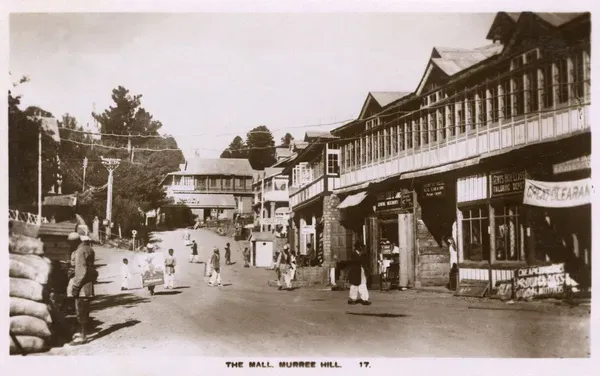

The Holy Trinity Church, completed and consecrated in May 1857, became the architectural heart of colonial Murree. Built in Gothic Revival style, it featured pointed arches, stained glass windows, and a bell tower visible from across the hills. Mall Road, designed as the town’s social spine, was lined with shops, bakeries, and cafes catering to the British community.
Murree Rebellion and Colonial Resistance (1857)
Local Tribes’ Armed Resistance – History of Murree
When rebellion spread across North India in 1857, Murree did not remain quiet. Local tribes, including segments of the Dhund Abbasi community, challenged the fast growing colonial presence. Skirmishes disrupted transport and supplies between the hills and the plains. Contemporary records and later summaries describe a tense summer in which the hill station’s small garrison faced persistent pressure from surrounding valleys. For a concise primer, see the Murree rebellion overview.
Dhund Abbasi and Hazara Uprising – History of Murree
The unrest linked Murree to the wider Hazara belt. Raiding parties targeted outposts and convoys. British reports from the period note that tribal leaders leveraged terrain and local knowledge to harass colonial lines. This resistance underscored that Murree was not only a scenic refuge, it was also a contested strategic ridge.
British Military Response and Aftermath – History of Murree
The British responded by reinforcing the ridge, tightening patrols, and fortifying approaches to the European quarter and church precincts. Order was restored by late 1857, but the episode reshaped policies. The administration accelerated road building, expanded the garrison’s footprint, and formalized control over bazaars and passes. Background timelines are summarized in standard references.
- What changed after 1857: stronger patrols, stricter movement controls, faster civic construction.
- Long term effect: Murree’s militarized civic layout, still visible in road alignments and cantonment edges.
Summer Capital Era and Golden Age (1873–1876)
Punjab Government’s Seasonal Headquarters – History of Murree
In the early 1870s, Murree reached administrative prominence. For several summers, the Punjab government shifted its headquarters to the ridge, using the cooler climate for efficient work. This decision triggered a burst of building activity. Offices, rest houses, and elite bungalows multiplied along spurs that fed into Mall Road. A brief administrative history appears in FIBIwiki and HistoryPak.
Railway Connection and Accessibility from Lahore – History of Murree
There was no track to the summit, but rail to Rawalpindi, combined with improved bridle roads, cut travel time for officials and summer visitors. Carriages and palkis moved the final stretch to the ridge. The easier approach supercharged seasonal population spikes, sometimes pushing the hill station to several times its winter size, a pattern noted in colonial gazetteers.
European Social Life and Cultural Institutions – History of Murree
Clubs, libraries, music recitals, and cricket shaped social life. The church calendar anchored Sundays, while Mall Road became an evening promenade. Boarding schools and training institutions emerged around Ghora Gali, later associated with Lawrence College history. Together they framed the hill station as a compact European cultural enclave.
Transfer to Shimla and Changing Dynamics – History of Murree
By the mid 1870s, administrative gravity tilted to Shimla, the larger imperial capital in the Himalayas. Murree adapted. It settled into a dual identity, part cantonment, part summer resort, with commerce geared toward seasonal waves of civil and military families. This shift preserved Murree’s charm while tempering bureaucratic expansion.
- Peak season functions: governance support, schooling, leisure, convalescence.
- Off season reality: small resident core, maintenance works, supply planning for the next summer.
Colonial Architecture and Heritage Buildings
Tudor Bethan and Neo Gothic Architectural Styles – History of Murree
Murree’s skyline reads like an open air primer in Victorian era design. Residences often borrowed from Tudor Bethan cues, think steep gables, half timber hints, and stone coursing. Civic and religious buildings leaned Neo Gothic, marked by pointed arches, lancet windows, and buttresses. For style context, compare with Gothic Revival primers and curated photo sets of Tudor style elements.
- Quick style checklist:
- Tudor Bethan, asymmetry, steep pitched roofs, tall chimneys.
- Neo Gothic, pointed arches, tracery windows, spires or bellcotes.
- Materials, local stone, timber, lime mortar, cast iron details.
Holy Trinity Church, A Gothic Revival Masterpiece – History of Murree
Consecrated in May 1857, Holy Trinity sits at the symbolic and geographic heart of colonial Murree. The plan follows a simple nave with a pronounced tower, readable from multiple ridgelines. Surviving stained glass, memorial plaques, and grave markers document the station’s European generations. Photo essays and notes appear in Dawn’s architecture feature and in archival collections like Sarmaya.
Lawrence College, Educational Colonial Legacy – History of Murree
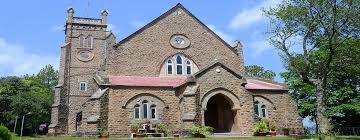

Founded in the 1860s near Ghora Gali, the college combined pedagogy with mountain health logic. Academic blocks and dorms blend stone masonry, deep verandas, and tall roofs that shed snow and summer rain. Its long alumni line links the institution to regional civic life. See official histories and encyclopedic entries for evolution and campus plans.
General Post Office and Commercial Architecture – History of Murree
Postal and commercial blocks clustered near Mall Road to serve a seasonal town. The post office, recorded in late nineteenth and early twentieth century visuals, shows restrained civic styling with functional arcades. Archival images of “The Mall, Murree” are cataloged by the National Army Museum.
Cecil Hotel and Residential Colonial Buildings – History of Murree
The Cecil Hotel, established in the mid-19th century, became a hallmark of refined colonial hospitality. Located strategically to offer panoramic views of the surrounding hills, it hosted British officers, civil servants, and visiting dignitaries. Its architecture combined large verandas, wooden balustrades, and stone masonry, creating a blend of comfort and climatic adaptation. Residential colonial bungalows across Murree echoed similar design elements, featuring fireplaces for winter warmth, wide eaves for monsoon protection, and manicured gardens. Many of these homes, though modified over time, still carry the original stone and timber work, offering a glimpse into the lifestyle of the colonial elite.
Post-Independence Transformation (1947–Present)
Transition to a Pakistani Hill Station – History of Murree
After 1947, Murree shifted from a British colonial retreat to a national tourism jewel. The administrative quarters and military cantonments remained, but the exclusivity of the European quarter dissolved. Pakistani families began to frequent the hill station in greater numbers, turning once-segregated spaces into public areas. Religious and cultural changes were also visible, as churches continued to stand alongside mosques, reflecting a layered heritage.
Tourism Development and Infrastructure Growth – History of Murree
The post-independence decades saw a surge in hotel construction, road improvements, and expanded bazaars. Mall Road evolved into a bustling commercial artery lined with souvenir shops, cafes, and restaurants. The government invested in connecting Murree to nearby attractions like Patriata (New Murree), Ayubia, and Nathia Gali, making it a gateway for northern tourism. Seasonal visitor numbers began to soar, with peak seasons during summer and winter snowfall.
- Major infrastructure upgrades in the 1960s and 1970s improved road safety and travel time from Rawalpindi and Islamabad.
- Public parks, viewpoints, and recreational facilities were established to attract families and tour groups.
- Public transport options, including buses and shared vans, made the area accessible to middle-class travelers.
Heritage Preservation Challenges and Efforts – History of Murree
Despite its popularity, Murree’s heritage sites face challenges from urban sprawl, unregulated construction, and environmental degradation. Many colonial-era buildings have been repurposed without proper restoration, risking the loss of architectural authenticity. However, initiatives from the Punjab Archaeology Department and local NGOs have aimed to list, protect, and restore key sites like the Holy Trinity Church, Lawrence College, and the General Post Office. Recent restoration projects on Mall Road’s façades signal a renewed interest in heritage tourism.
Modern Development Projects and Heritage Balance – History of Murree
Recent government plans include structured parking facilities, pedestrian-only zones on parts of Mall Road, and conservation-driven tourism policies. Balancing modern development with heritage conservation remains a priority, as unchecked growth could erode Murree’s historical character. The Murree Development Plan 2025 includes restoration grants, stricter building codes, and heritage walks to educate visitors about the town’s history while stimulating sustainable economic activity.
Murree’s Historical Significance in Context
Role in British Imperial Strategy – History of Murree
Murree was more than a leisure spot for the British—it was a strategic outpost. Its elevation provided a defensible position, and its proximity to the Kashmir and Hazara regions allowed the British to monitor northern frontiers. The station’s military cantonment ensured that troops could recuperate while staying close to key mountain passes.
Cultural Exchange and Colonial Society – History of Murree
The colonial era brought a fusion of British and local cultures, visible in architecture, education, and social customs. While the British maintained their own clubs and institutions, interactions with local merchants, artisans, and service providers created an economic and cultural link. The introduction of Western-style education through institutions like Lawrence College had long-term impacts on the region’s professional classes.
Impact on Regional Development Patterns – History of Murree
Murree’s growth spurred improvements in surrounding valleys, encouraging road building, small-scale industry, and hospitality ventures. The hill station’s success inspired the development of other highland retreats across the subcontinent, shaping the pattern of seasonal migration for leisure and governance among the colonial elite.
Legacy in Modern Pakistani Tourism – History of Murree
Today, Murree continues to serve as a model for hill station tourism in Pakistan. Its mix of colonial heritage, scenic beauty, and modern amenities makes it a year-round destination. The legacy of its history influences how other tourism hubs are developed, highlighting the importance of preserving cultural landmarks alongside promoting economic growth.
FAQ – History of Murree
When was Murree founded and by whom?
Murree was founded in 1851 by Sir Henry Lawrence as a sanatorium for British troops stationed in Punjab. Its formal development began in 1853 at the Sunnybank site.
Why did the British choose Murree as a hill station?
The British selected Murree for its cool climate, scenic beauty, and strategic location, which provided a respite from the heat and a defensible position near key northern routes.
What architectural styles are found in colonial Murree?
Colonial Murree showcases Tudor Bethan and Neo-Gothic styles, evident in its churches, colleges, post office, and hotels, characterized by stone masonry, steep gables, and pointed arches.
Which historical buildings can visitors see today?
Notable surviving buildings include Holy Trinity Church, Lawrence College, the General Post Office, and the Cecil Hotel, many of which are heritage-listed.
Final Thoughts
The history of Murree is a tapestry of strategic planning, colonial elegance, cultural exchange, and evolving tourism. From its days as a secluded British retreat to its present role as Pakistan’s “Queen of the Hills,” Murree stands as both a historical treasure and a modern tourist hub. Preserving its heritage buildings and cultural narratives is essential for future generations to appreciate its unique legacy.
Call to Action: Plan your next visit with a heritage walk through Murree’s colonial landmarks, and support local efforts to preserve these irreplaceable historical sites.
Author: ZunNurain Khalid – Tourism Development Specialist & Heritage Researcher
References
- Wikipedia – Murree
- History Pak – Murree
- Dawn News – Murree’s British-era Buildings
- Sarmaya Arts Foundation – Holy Trinity Church
- Tourism Development Corporation Punjab – Murree

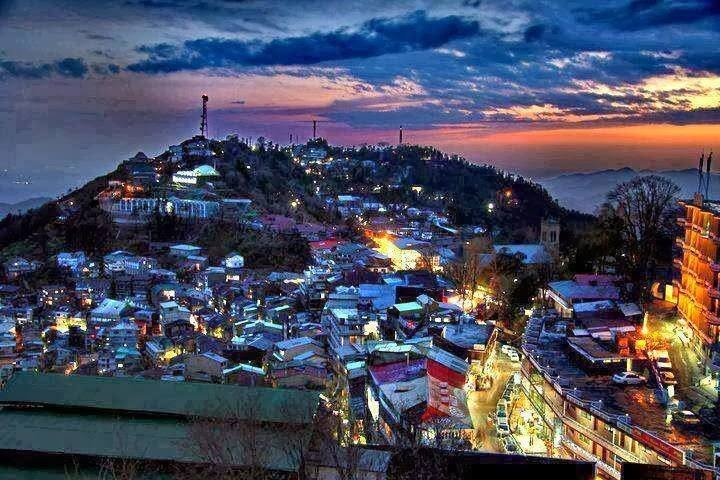
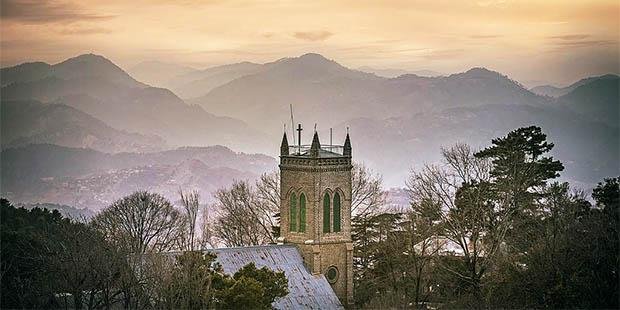
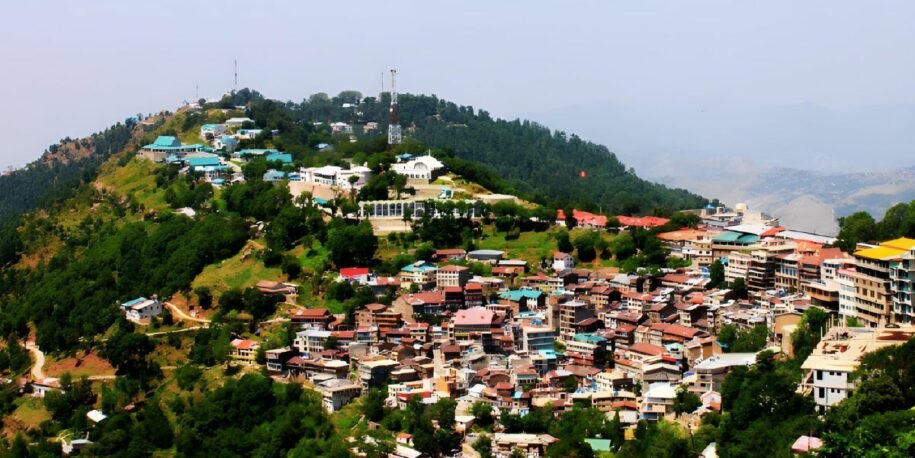
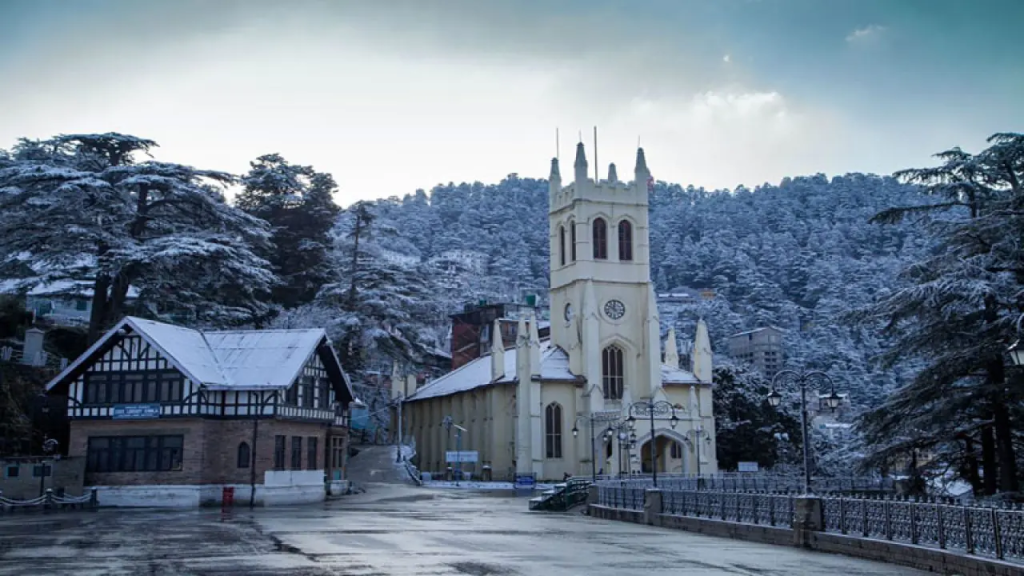
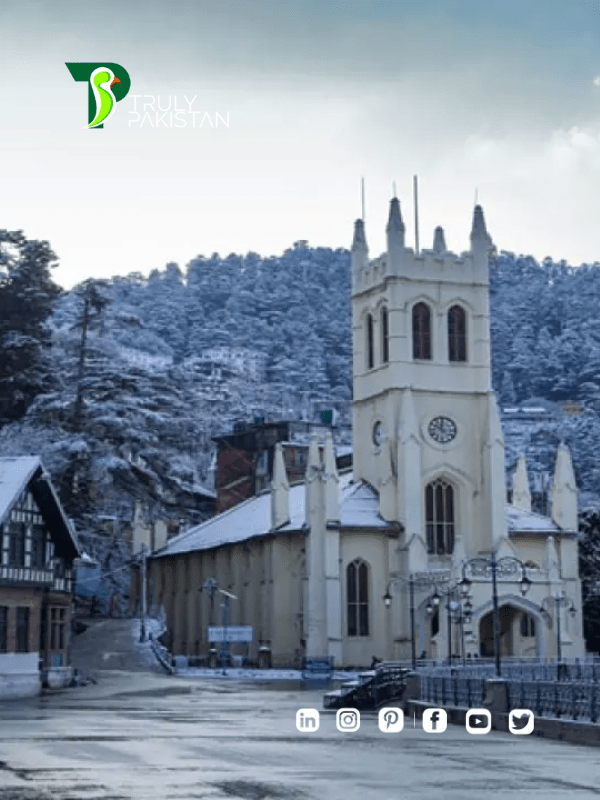

2 thoughts on “History of Murree: From British Hill Station to Pakistan’s Premier Tourist Destination”